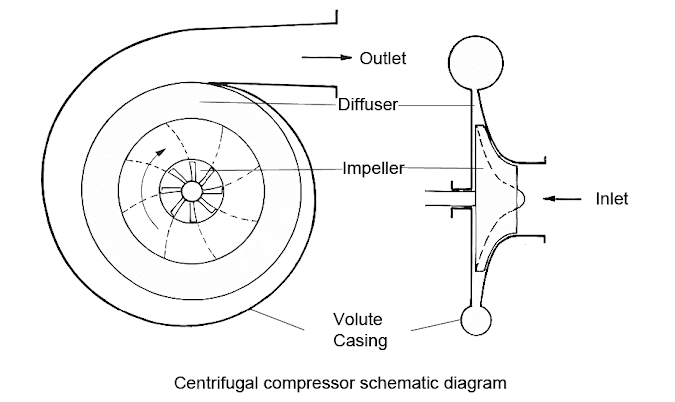Centrifugal Compressor Parts and Its Function With Pressure-Velocity Variation Curve
The centrifugal compressor also known as the radial compressor is a dynamic compressor consist of three main components.
- A stationary casing
- Rotating impeller
- A diffuser
Stationary case
The casing is the pressure containing component of the centrifugal compressor. The casing houses the stationary internal components as well rotating components. Bearings are provided in the case to support impeller. Inlet and outlet are also integral to the stationary case.🔗Working principle of centrifugal compressor
Impeller rotor
The compressor rotor is an assembly of impellers mounted on a steel shaft. Impeller consists of a set of blades. As impeller start rotating the vanes draws low-pressure fluid from the center of the impeller and pushes outward to its periphery by centrifugal force. The rotating vanes accelerate the fluids as it moves from impeller input known as inducer or eye to the outlet known as exducer.Diffuser
The diffuser can be vaned, vaneless, or its combination. The gas exits impeller vanes at very high velocity and enters to the diffuser. The kinetic energy of the gas is converted into pressure as it passes over the diffuser. The volute casing collects the gas from the diffuser and directed to the outlet.Approximately half of total pressure achieved in impeller and remaining in diffuser
Pressure-velocity variation curve
Read: Advantages, disadvantages and applications of centrifugal compressor
Difference between hermetic, semi-hermetic and open compressor - advantages and disadvantages



